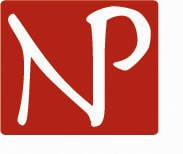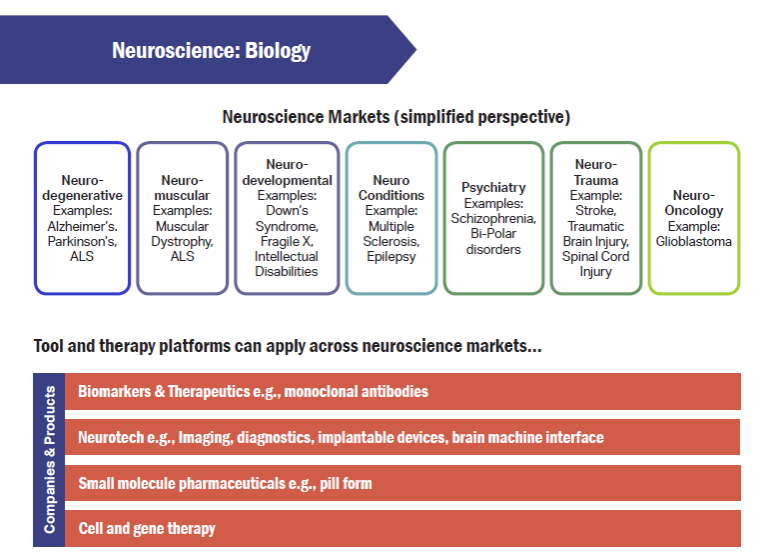|
When Yale New Haven Hospital announced its plans for a $838 million neuroscience center in Spring 2019, leaders in New Haven began to think about what an investment of this kind would mean for city. The proposed center will be developed at the current St. Raphael campus with the addition of 505,000 square feet including 204 in-patient beds. It will focus on the research and treatment of diseases like Parkinson’s, Alzheimer’s, epilepsy, multiple sclerosis, and stroke.
The City hired NP to help local partners better understand what opportunities could become possible based on national neuroscience trends, New Haven’s existing strengths, and an examination of local workforce and land use issues that could contribute and/or hinder neuroscience industry growth. Building on NP’s 2016 Life Sciences analysis for the City along with more recent work on Innovation Places, NP examined the current state of neurosciences in New Haven and the economic development implications for city. The findings included:
The City intends to use the study’s findings to inform a marketing and development program to grow the neuroscience industry in New Haven.  City officials in Richardson, TX recently announced two major actions that will better position the city for new growth. The actions are a result of the City’s 2018 vision and strategy for the area; an effort for which NP provided economic and innovation sector assessment, real estate analysis, engagement with key stakeholders, and strategy development. In December 2019, the City Council approved a rezoning of the 1,200-acre district to encourage higher density growth and a mix of uses. Prior to the rezoning 90% of the area was zoned industrial. The rezoning is organized into four subareas:
In January 2020, local partners unveiled the district’s new brand: The Richardson Innovation Quarter (The IQ). The IQ promotes Richardson’s district as a place to “live, work, and invent”, seeking to attract entrepreneurs looking to commercialize new developments and grow their companies in the area. The district is already home to companies like id Software; and Honeywell, Raytheon EO Innovations and Siemens have operations based there as well. The regulatory and marketing efforts will work hand in hand to attract new business and residents to the area and will be bolstered by additional work to increase multi-modal transportation options, for which the City received a grant in September 2019. NP’s recent work with two universities laid the foundation for new developments that will support the economic growth of the universities’ host cities (and states):
University of Dayton Invests in City’s Future The University of Dayton was featured recently in The Atlantic for its commitment to the revitalization of the city of Dayton, OH. It is among a class of institutions of higher learning that recognize the important role they play in creating new economic opportunities for their communities. The University’s “onMain” project was one of efforts featured; it is a partnership with Premier Health to revitalize a 38-acre former fairgrounds site (for which NP provided economic and feasibility analysis). New Development in UGA’s Innovation District The University of Georgia (UGA) is moving forward with a new physical space to catalyze the institution’s new Innovation District. Its $4.4 million renovation of its former Business Service Annex building will be the second building re-purposed to support innovation in the district and will include flex space for entrepreneurs, meeting rooms, and collaborative spaces. The development follows from recommendations NP put forward as part of the Athens Innovation Initiative in 2018, which highlighted the growth and focus of UGA research as well as the need for flexible work space. Three NP projects made the news recently for their efforts to move from redevelopment plans to action including a site re-use project in Ohio, a downtown district in Massachusetts, and riverfront redevelopment in Connecticut: $30 Million Commitment to Spur Site Redevelopment in Dayton, OH Premier Health and the City of Dayton, OH have pledged $15 million each to redevelop the Good Samaritan Hospital site in Northwest Dayton. The City and Premier Health plan to use their funds to secure additional public and private funds in order to redevelop the site for a mix of uses that encourage market rate housing and new job creation. The pledge comes as result of the recently completed Phoenix Next project, which engaged community members and stakeholders in planning for the future of the 13-acre site. NP prepared the economic and data analysis to support the redevelopment planning. 13-acre hospital redevelopment site and potential build-out in Dayton, OH. Neighboring Cities in CT Take Steps to Revitalize Riverfront Districts In August, NP completed an analysis for the Cities of Groton, CT and New London, CT on how they could revitalize two riverfront districts connected by a multi-use path. The Thames Street Promenade Study produced guiding strategies for the districts as well as short term actions to spur early stage redevelopment. The City of Groton has already begun to take next steps including creating a Tax Increment Financing District and applying for grants to improve accessibility and address resiliency planning. The Thames River Waterfront in Groton, CT Downtown District Dining Fund to Bring New Business to Springfield, MA The City of Springfield is offering up to $200,000 in low interest loans to attract new restaurants to the city’s Transformative Development Initiative (TDI) District. The Fund is part of a broader effort to accelerate growth in the district including other actions such as Develop Springfield’s Lease It Local Program, which subsidizes leases for small businesses in vacant or underutilized buildings. Much of the implementation has its roots in the TDI program’s Active Implementation Plan produced by NP in 2016. 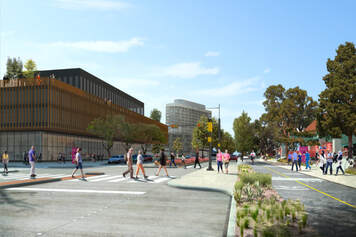 As NP wrote about in July, the City of Richardson, Texas launched the Collins/Arapaho Transit-Oriented Development and Innovation District Study in April 2018 with the intention of creating a vision and plan for a 1,200-acre industrial area within the city. The district is at the heart of Richardson’s Telecom Corridor®, which has been a job center and hub of technology and innovation in the region. The American Planning Association’s Texas Chapter has recognized the project for its excellence in economic development planning with a Silver Award, to be celebrated at the organization’s upcoming conference in November. These awards recognize efforts to transform economies and stimulate economic development. In September the City received a Made to Move grant in recognition of its efforts to improve mobility; it is among five cities that will share $500,000 in funding. The city will implement a “road diet”, which will remove driving lanes and add bicycle lanes and an at-grade pedestrian crossing to better integrate the light-rail station with the planned Innovation District as well as help install the City’s first roundabouts to help calm traffic. In addition to the placemaking efforts that NP wrote about in July, the Study puts forward strategies to update the district’s older, industrial building stock in order to attract new businesses and support entrepreneurs who are looking to start or scale up. The City is considering ways to incentivize the modernization of buildings and enable greater zoning flexibility in industrial zones. Currently, the City is reviewing a draft form based code for the district. NP has worked in a number of older industrial cities across the country. Many of these are struggling to rebuild their downtown core due to fundamental a chicken or egg dilemma: “I need amenities like retail and restaurants to get people downtown but without people already downtown how do I get restaurants and retail”?
NP advises our clients to take small, impactful interim steps to prove a market exists. For instance, recently NP worked on a restaurant incubator program for Brockton, MA. During the course of the study it became clear that the concept required too much capital for a market that wasn’t quite ready to fully believe in the downtown as a destination. So, we suggested an interim strategy around a low cost, pop up idea on an empty site. And what do you know – Prova! Brockton happens. The best part – Prova literally translates to “proof”. We love the crowd funding aspect to show community support, the low cost approach to design to reduce the risk of failure and activating an empty lot in a strategic location. We can’t wait til it opens. 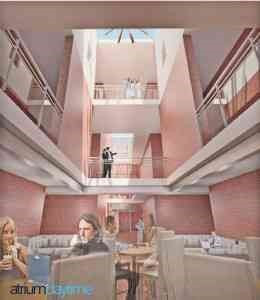 “You miss 100% of the shots you never take” – Wayne Gretzky Innovation Districts are the current rage in urban regeneration and economic development. How a particular community develops its own innovation sector varies based on that community’s existing industry strengths, talent pipeline and available economic infrastructure. Many hope to become the next Silicon Valley but few realize the building blocks that need to be put in place and the length of time it takes to really get to scale to impact the trajectory of a local economy. Frankly, some of these efforts are economic development “me-tooism” with little hope of creating momentum. However, others are based on real opportunities that keep taking steps down an evolutionary path. Two of NP’s recent clients have taken great strides towards growing their innovation capacity – Newport, RI and New Haven, CT. Creating a Hub Newport RI, the city by the sea, has long been known for its elegant mansions, sailing history and its US Navy presence going back to colonial times. Its beautiful coastal setting, walkability, and ample cultural, outdoor, and social opportunities make it a lifestyle destination community. Newport and Middletown (its closest “suburb”) have always had elements of the creative economy because of their lifestyle advantages. And the Naval Undersea Warfare Center (NUWC) has always supported a series of software and engineering support companies to advance its mission. Recently, there has been substantial effort to build on Newport’s nascent creative and tech community. One of the missing pieces was a physical hub that could serve multiple functions for the creative and tech communities. This April, Newport RI leaders gathered to break ground on the redevelopment of the former Sheffield School, which is being re-purposed as a business incubator and co-workspace in Newport, RI. The 34,000 square foot building will be focused on supporting entrepreneurs and small businesses working in the defense, maritime and technology industries – industries that are active in Newport but need additional support to gain scale. NP worked with the Newport County Chamber of Commerce, who will be serving as program manager, to develop the service model for the Hub as well as reorient the Chamber’s programs to better serve the growing entrepreneurial sector of the Newport economy. Additionally, Kevin Hively of NP served on the board of the Economic Development Foundation of RI – the nonprofit development entity hired by the city to re-purpose the Sheffield School into the InnovateNewport Hub. Making a City an “Innovation Place” Requires Many Complementary Efforts In some cases, like in Newport, a physical hub is required to serve as an organizing force and provide visual evidence of activity. In other communities, it's more about weaving together a patchwork of activities under a single framework. New Haven, CT has an active, growing creative and innovation economy but more needed to be done to encourage growth, connection, livability, and opportunities for ALL of its citizens. In 2016, CTNext initiated a challenge grant program called “Innovation Places”. In response, New Haven's Elm City Innovation Collaborative (ECIC) put together a strategic plan that called for actions in four key areas:
Since being selected as an Innovation Place by CTNext in 2017, the Collaborative has been taking great strides to implement its Strategic Plan. Recent progress includes:
One of the great aspects of the New Haven approach to building an Innovation Place is how it includes aspects to help the broad community engage in the innovation activity. It’s truly a community focused effort.  Things are happening in Springfield, MA. For the past several years the City and its partners have been charting a course for the downtown's future, which has led to increased investment and interest in the city. Recent progress includes the opening of two restaurants, a new yoga studio and construction is slated to start soon on 60 new apartments. Just last week the DevelopSpringfield announced its second round of Lease It Local, a program aimed at attracting entrepreneurs to the city through a package of incentives. (Check out NP's 2017 post for more info on the program.) NP led or supported planning and implementation support for the city's downtown including the Worthington Street Corridor Study, an Investment Prospectus, and Dining District Implementation Plan. Much of this work was completed through MassDevelopment’s Transformative Development Initiative. 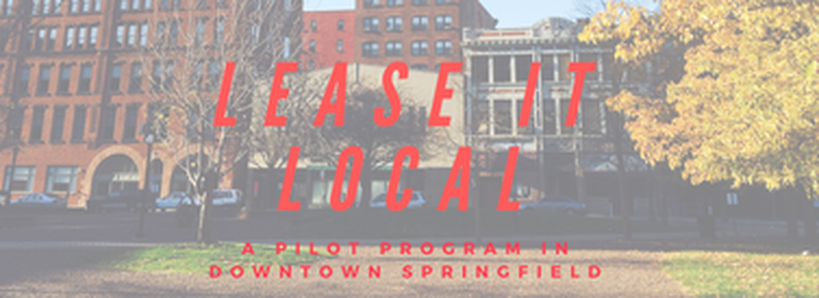 DevelopSpringfield recently announced that is accepting applications for its "Lease It Local," a program, which will offer businesses up to half a monthly lease (up to $500) to occupy storefronts that are now vacant or underused. Eligible properties are vacant or underused ground-floor storefronts in the Springfield Transformative Development Initiative (TDI) District. The Lease It Local program aims to:
DevelopSpringfield's Lease It Local program will provide:
Eligible applicants include independent operators (no franchises or chains), artists, or social enterprises. While all industries are welcome, the program emphasizes uses drive daily foot traffic and preference is given to Springfield residents and those who have completed formal business training or mentoring. For more info on the program check out DevelopSpringfield's program page. NP performed the project consulting on the Springfield TDI Partnership’s Active Implementation Plan that worked with the Springfield TDI Partnership for the district. A key action within the strategy was spurring retail frontage development including a subsidy program for potential tenants while the market was still being “proved.” Downtown Grand Rapids Inc. is being celebrated for its work to put forward an equity driven growth model for the future of the city's downtown. Recently, the International Downtown Association (IDA) recognized the Grand Rapids community for its efforts to build racial equity and opportunity in Downtown Grand Rapids with a Pinnacle Award - the industry's highest honor.
Downtown Grand Rapids spearheaded Grand Rapids Forward, which is a 10-year plan and investment strategy "to transform the Grand River into a distinct asset and support the next generation of growth in Downtown Grand Rapids." Since the Plan's adoption in 2015 many actions have been taken that support greater equity and inclusion in Grand Rapids including but not limited to:
NP is proud to have been part of the team who prepared the Grand Rapids Forward Plan, serving as an economic consultant with a focus on workforce development, retail dynamics and entrepreneurial activity. |
|
